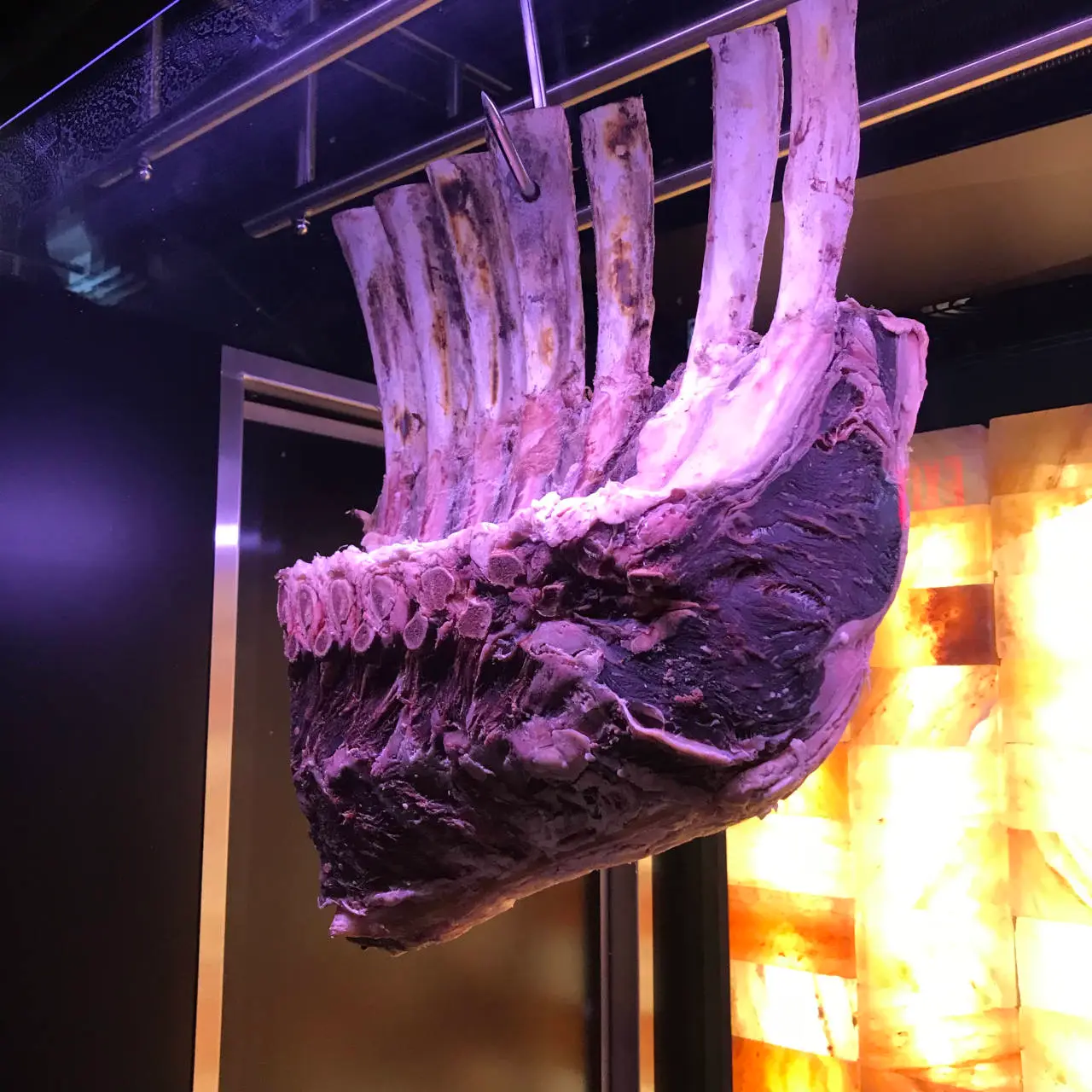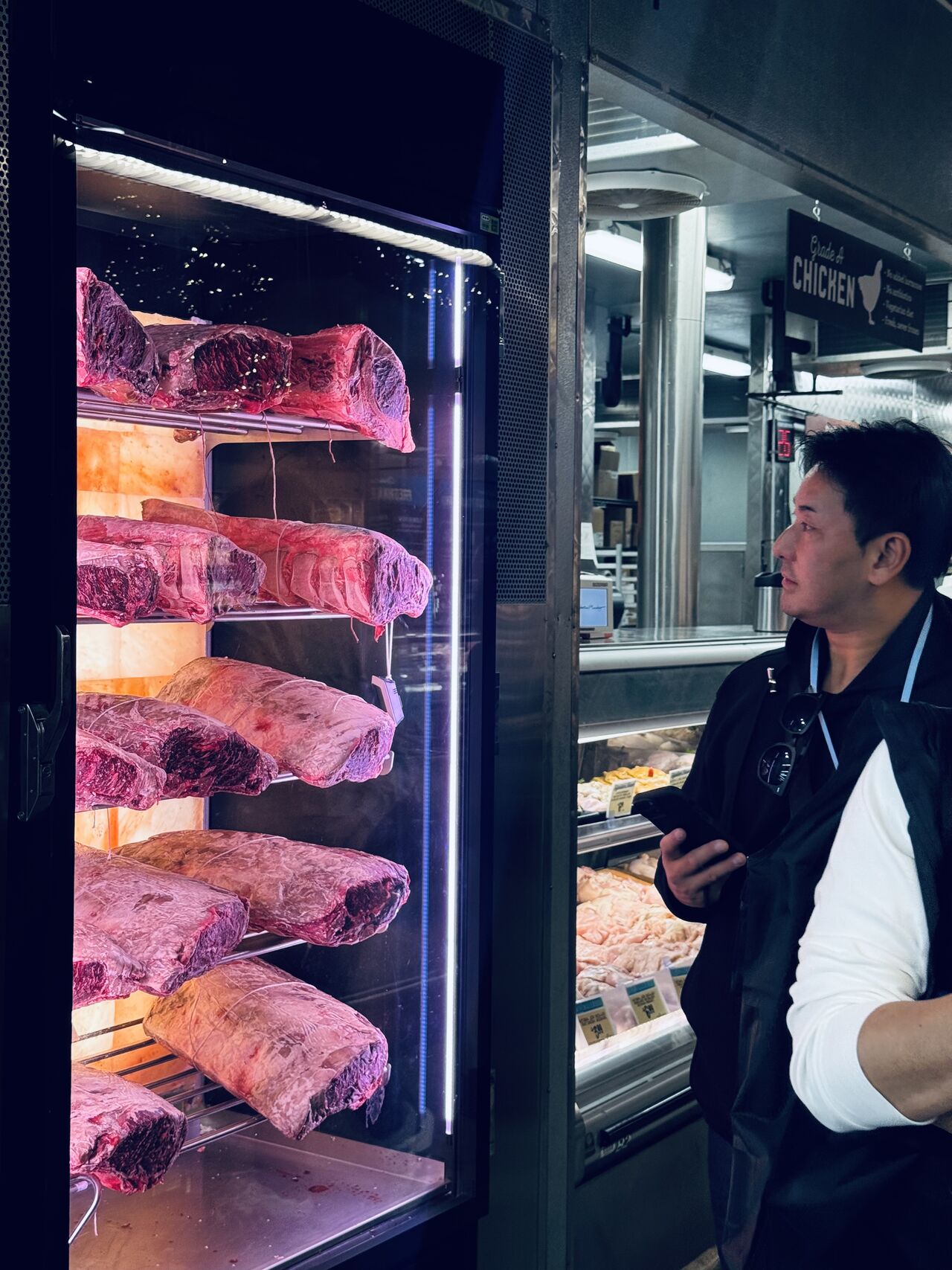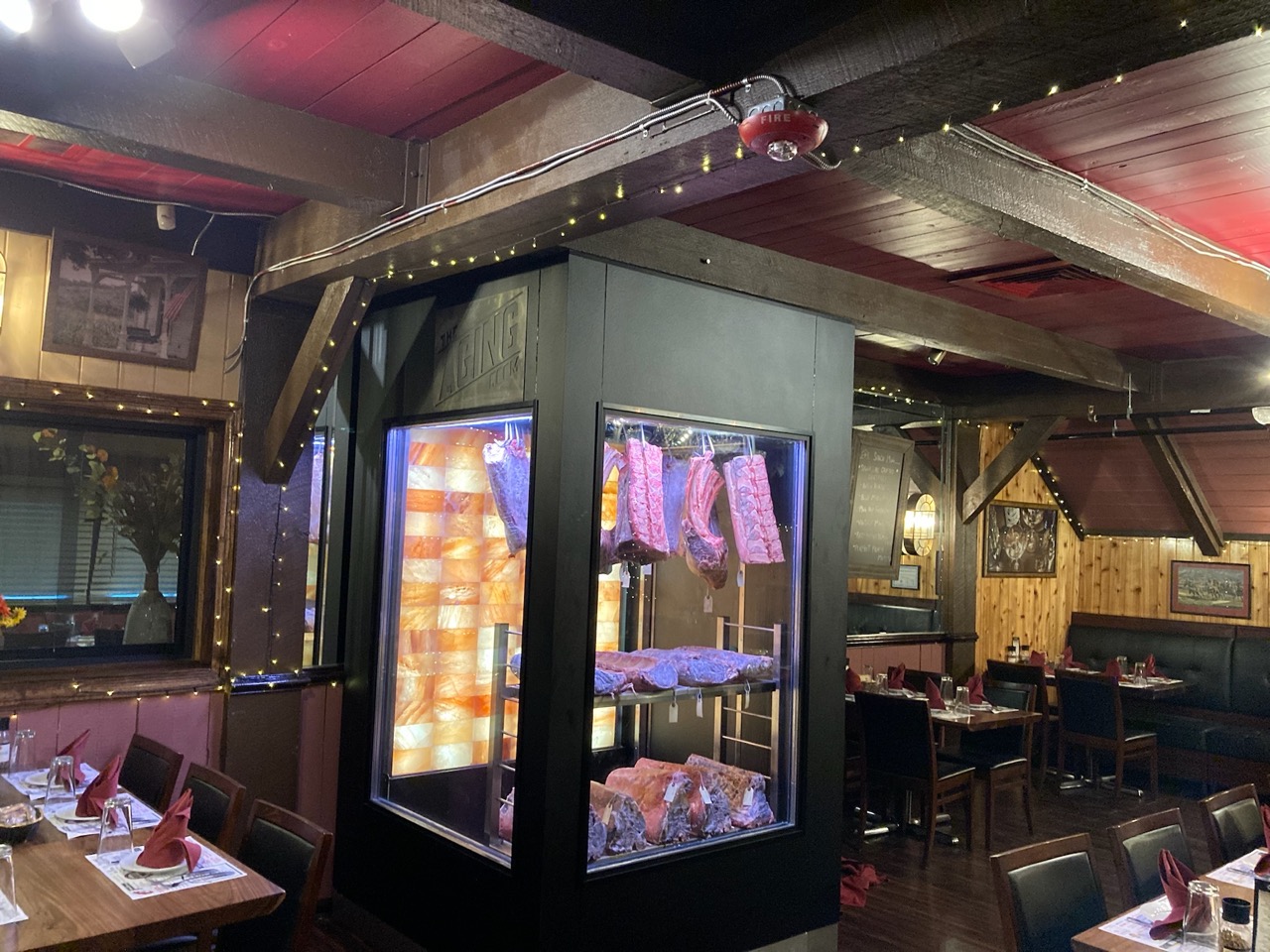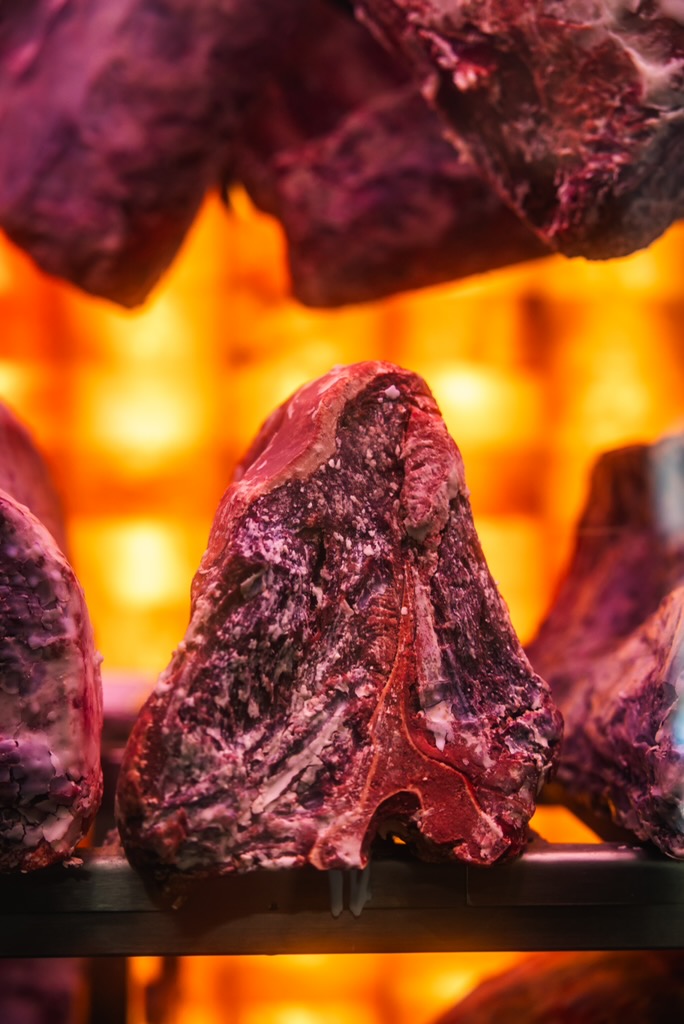
What is "Dry Aging"?
Dry Aging is the process where you need to create a special microclimate that evaporates the moisture out of the meat. Enzymes work to break down the fibers. This process tenderizes the beef and increases its taste. The process, if done correctly, gives the meat an even desirable Umami, nutty, rich taste.
What equipment should be used for Dry-Aging?
Dry-aging meat is a process that requires specific equipment to achieve the best results. The quality of the equipment can significantly impact the taste, tenderness, and richness of the final product.
Every little detail matters. Maintaining the right temperature, humidity, and airflow in every corner of the dry aging room is crucial. Even how the meat touches the shelves matters. Matching the right tool with the product is essential for a successful outcome and a high-quality output. The weight loss and yield of the product are also affected by the quality of the equipment used. If done correctly, dry-aged meat offers a unique culinary experience with a multitude of levels of flavor. The evenly distributed taste throughout the meat provides a perfect balance of tenderness and richness. The equipment used plays an essential role in achieving the desired results, making it crucial to choose the right tools to achieve the best possible outcome.
Salt Dry Aging Technique
In many applications, salt plays an essential role in the meat aging process. Its main purpose is to aid the natural and traditional aging process, which ultimately enhances the taste and helps with tenderness. Adding salt during the aging process helps prevent excessive meat loss and achieves even taste in all parts of the cuts, not just the fatty ones. To accomplish this, a significant amount of salt is necessary, rather than just one or two slabs. Following this process and using salt during aging can drastically reduce meat loss to around 10–15% during the first four weeks of dry-aging. However, if you skip the salt, you can expect a much higher loss rate of 40% or higher. It's important to mention that salt also has antibacterial properties that help preserve the meat.
How do you prepare meats before Dry-Aging?
To ensure that the meat matures correctly in the dry-aging process, it needs to be dried correctly after slaughter. During the first night, it should hang freely in a refrigerator. If the meat doesn't cool down too swiftly initially, the risk of cold shortening decreases. Once the meat is suitably dried, it becomes ready for aging.
Which Cuts of Meat are Best for Dry Aging?
We'll be focusing solely on beef in this article, but don't worry, in the next series, we'll cover all other types of meat that can be aged.
When it comes to dry-maturing meat, the best cuts to use are those that are hygienically prepared, with no bloody spots and a smooth surface. It's important to choose meat that isn't dark, sticky, or gluey, and doesn't release too much water. Additionally, the pH value should be somewhere between 5.3 and 5.8.
The Hindquarter (up to eight to ten ribs long)
The hindquarter can be processed in different ways. After ten days, the thin meat can be sawed off while the bavette and beef ribs can be treated further. The remaining parts can also be processed. After 14 to 20 days, the leg can be removed. The large back or the large loin, without the tenderloin head, can be further matured until the desired duration is achieved.
The Beef Pistole
The belly flap of a beef pistole can be used for bavettes, beef ribs, and processed meat. The ribs can also be removed to serve as tomahawk steaks.
The Large Back Piece
The back piece with the hip muscles and tenderloin head can be suspended from the pelvic bone hole, allowing for large steaks, including the rump and top cap.
The Large Loin (up to 10 ribs)
The tomahawk, a steak cut, can be used for T-bone and porterhouse steak or without the fillet. If used for fillet, cut the head off smoothly and hang the large loin with the tip of the fillet pointing downwards to prevent loss of juice at the cut.
The Shoulder
The cuts of beef known as false fillet, flat iron, teres major, Vegas strip, and square cut can be aged by separating the shoulder blade from the humerus joint and suspending it from the pierced joint head. If you wish to slice this piece of meat, the center tendon must be removed from the false fillet.
Beef Ribs
Beef ribs are cut from the thin portion and the tension rib between each one. Dry Aging period is 14 days.
Beef Ossobuco or Beef Shank
Similar to ribs, the hind leg and foreleg can be prepared for cooking after 14 days of dry-aging.
In the upcoming article, we'll delve into some common errors and how to fix them. Additionally, we'll provide further insight into various types of meat. Keep an eye out!
Learn More About The Aging Room®'s Chamber
By combining traditional aging processes and modern technology, The Aging Room® uses state-of-the-art climate control equipment with Himalayan salt to create an aging-friendly, natural microclimate to dry-age steaks to their fullest potential. The steak rests and ripens in a natural environment, never frozen, vacuum-sealed, or chemically preserved, allowing restaurants, butcheries, and retail shops to utilize every part of the meat. Learn more about the benefits of The Aging Room Chamber.
Stay tuned!
We are working for you!
The Aging Room® team!


